My Family’s Christmas Staple: Garlic Herb Crusted Prime Rib
After a pretty universal and traditional menu for Thanksgiving, I find it super exciting to have more freedom for cooking Christmas dinner. I like to call Christmas dinner the culinary wildcard of the holiday season. Every family seems to have their own unique traditions – I love that so much!
At my house, the holidays are a mix of epic lasagna feasts, Mom’s dim sum spread, and at least one show-stopping beef dinner. Without fail, we always come back to this Garlic Herb Prime Rib recipe. It’s indulgent, packed with bold garlic flavor and fragrant fresh herbs like rosemary and thyme, and it’s always a total crowd-pleaser.
Since prime rib is such an iconic centerpiece for Christmas dinner—and a must-have for so many of our PWWB readers—I knew I had to share our family’s go-to recipe with you. To make sure it was absolutely perfect, I invited my mom to join me in the kitchen for recipe development, and let me tell you—she nailed it! I can’t wait for you to try this one; you’re going to be obsessed.
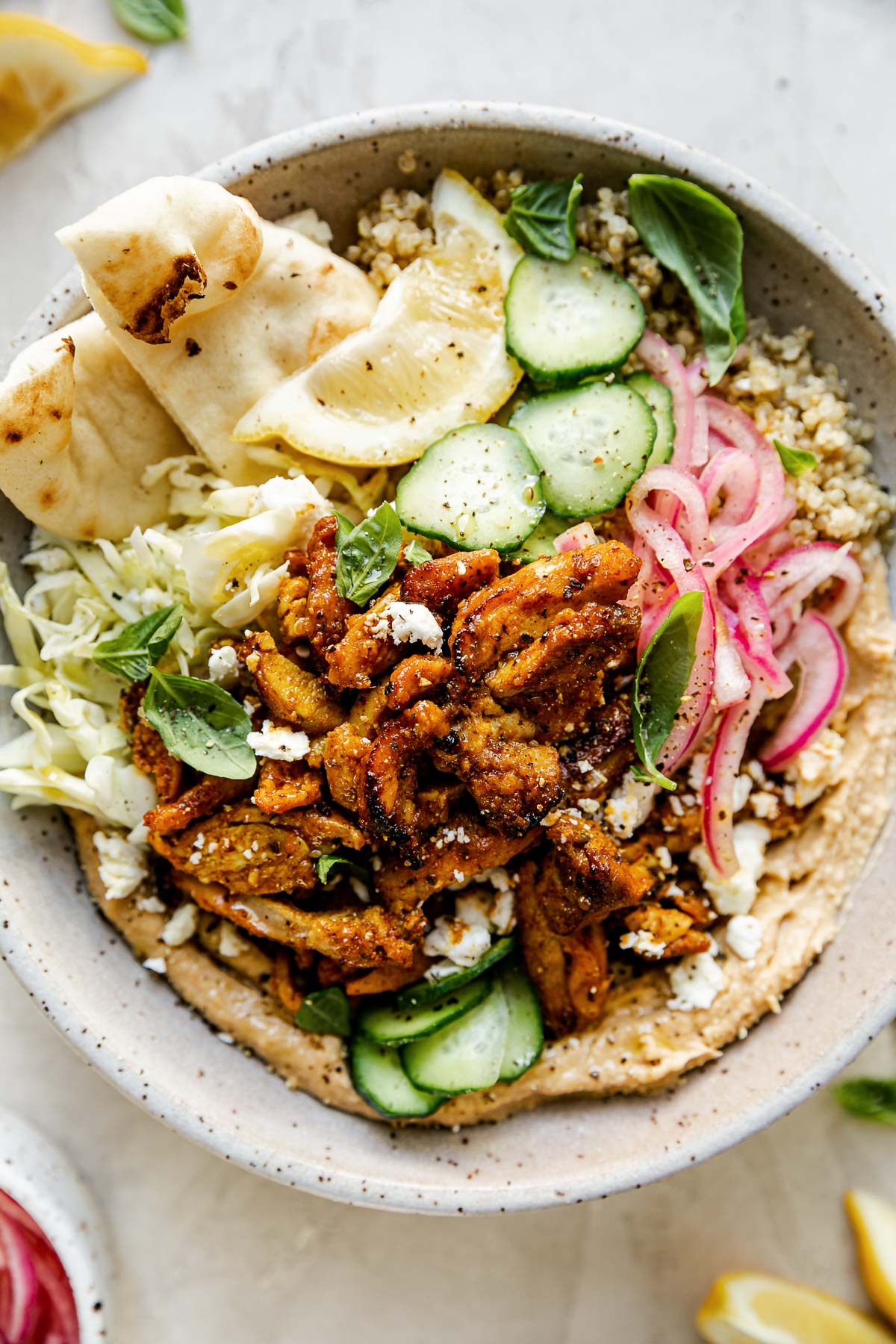
Maximum Flavor, Minimal Effort
3 foolproof secrets to low-fuss, flavor-packed dinners, learned from years working in restaurants.
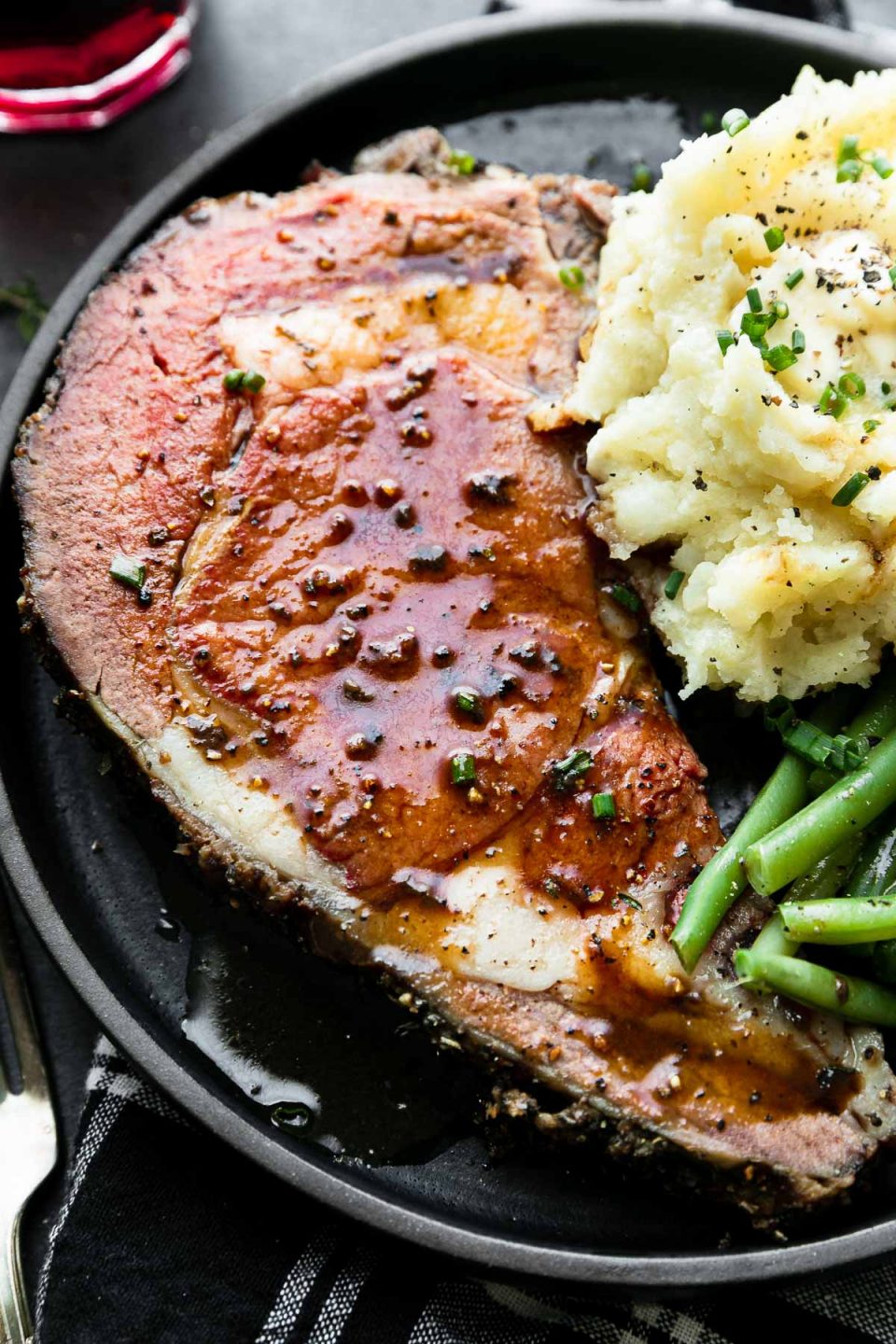
Picking the Perfect Prime Rib
Navigating the butcher counter can feel a little overwhelming—trust me, I’ve been there! With so many different cuts of beef and nuances to consider, it took me years to feel confident. But don’t worry, I’ve got you covered—let’s break it down together!
Prime rib comes from the primal rib section of the cow and is prized for its premium quality. Thanks to its gorgeous marbling, this cut is naturally juicy, melt-in-your-mouth tender, and deeply flavorful—truly a showstopper.

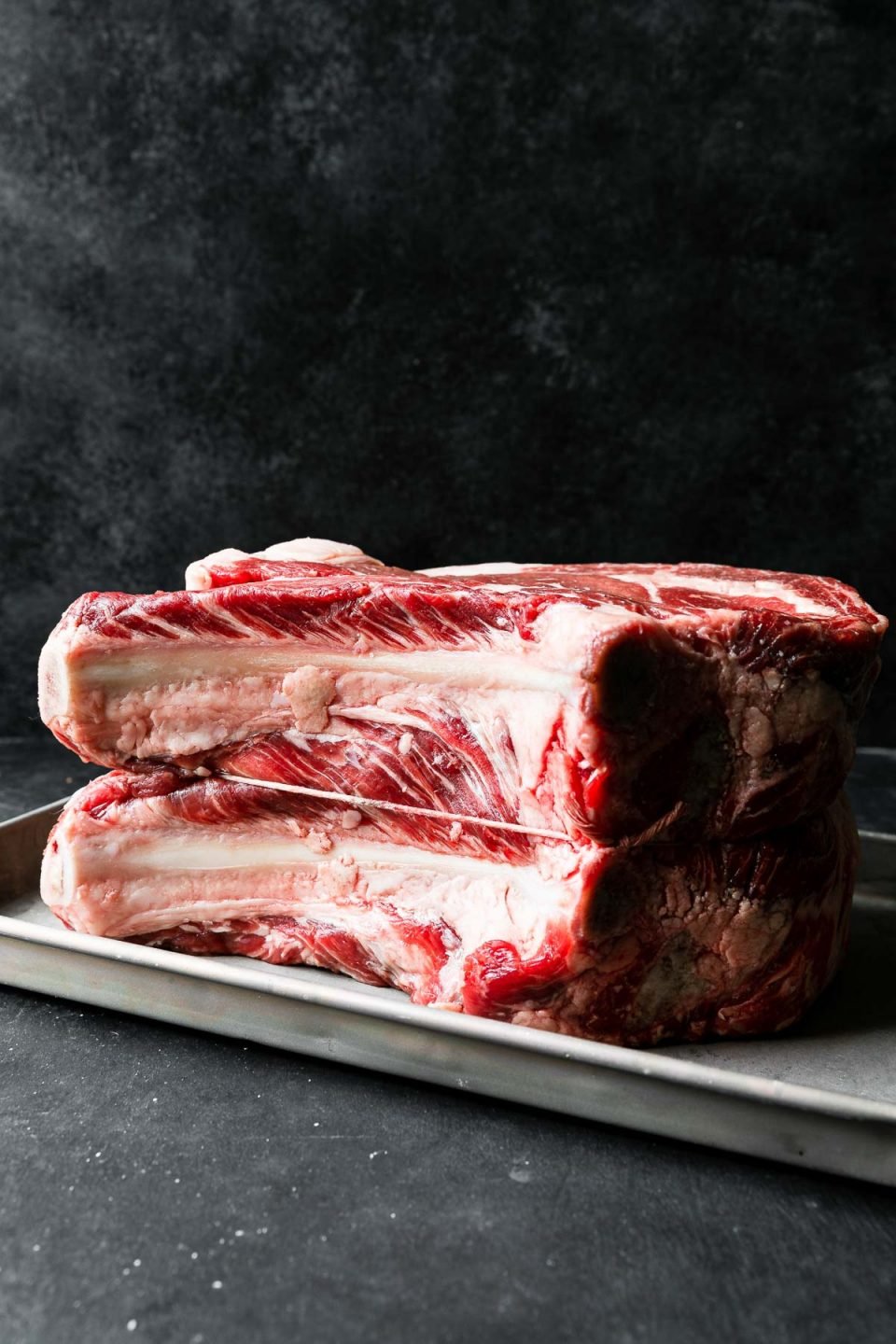
You’ll find prime rib—also called standing rib—at the butcher counter, available either bone-in or boneless. I always opt for bone-in. Not only does it act as a natural roasting rack, making it easier to handle in the pan, but it also creates drippings that are pure gold for the au jus. Whether you ask for “prime rib” or “standing rib,” your butcher will know exactly what you mean.
Pro Tip! ⇢ I like to ask my butcher to slice the bones off of the standing rib roast and tie them back on with twine. You get the same benefits of using bone-in rib roast but it’s way easier to remove the bones and carve the prime rib once it’s roasted. Once the prime rib rests, simply snip the twine, remove the ribs, and carve – easy!
How much prime rib should I buy? ⇢ If a prime rib roast is the main dish at your holiday dinner, a safe estimate is between ½ – 1 pound of prime rib per person. That’s also about one rib for every two guests. When in doubt, err on the side of buying extra – leftover prime rib is such a treat!

Must-Have Equipment
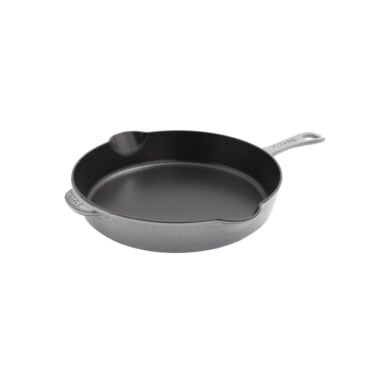 Buy Now →
Buy Now → 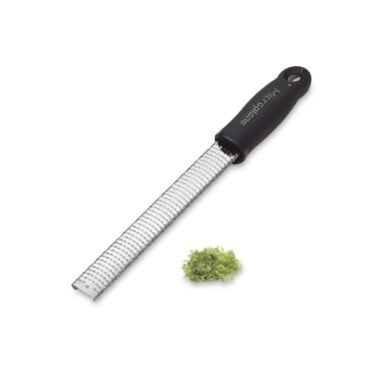 Buy Now →
Buy Now →  Buy Now →
Buy Now →  Buy Now →
Buy Now →  Buy Now →
Buy Now → How to Make the Juiciest Prime Rib (Reverse Sear Method!)
Cooking prime rib is easier than you might think, especially with this perfectly seasoned, herb-crusted roast.
This recipe uses the reverse sear method—a game-changer for prime rib. Start with a quick blast of high heat to create that irresistible golden-brown crust, then let the roast cook low and slow in the oven until it’s melt-in-your-mouth tender. The best part? It’s almost entirely hands-off!
Rest and prep the prime rib. For even roasting, the prime rib should be at room temperature before it goes into the oven. Plan ahead and take it out of the fridge 2-4 hours before cooking. Pat the roast dry with paper towels—less moisture means a beautifully golden crust!
Season your prime rib roast. A standing rib roast is naturally packed with a ton of rich flavor, so there’s truly no need to go too crazy with seasoning. A simple garlic and herb oil works beautifully here.


Roast – quickly with high heat, then low and slow. Place the standing rib roast, bone side down and fat cap side up, in a baking dish or oven-safe deep skillet. Roast it at 500℉ for 25 minutes. Then, turn the temperature all the way down to 200 degrees F and roast for two more hours.

Important! ⇢ Resist the temptation to open the oven door as the garlic herb prime rib roasts! We don’t want to create any fluctuation in temperature that could disturb the beef.
Rest to Medium Rare. After it has roasted, remove the garlic herb crusted prime rib from the oven and insert a digital thermometer into the center of the roast. At this point, it should read 115-120 degrees F for a perfect medium-rare. Set the prime rib roast aside to rest for about 20 minutes.


Prime rib cooking time can vary based on the size of the standing rib roast. This recipe allows 2 ½ hours for a perfectly medium-rare 5-pound prime rib roast. For larger or smaller rib roasts, simply adjust the high heat roast by 5 minutes per pound.

How to Make a Simple Au Jus Sauce
While the garlic herb-crusted prime rib rests, it’s the perfect time to whip up a simple au jus.
Au jus, which means with juice in French, is a light, flavorful sauce made from the meat’s natural drippings. The drippings from this roast are rich, savory, and loaded with herbaceous garlic flavor—perfect for creating a decadent au jus that takes this dish to the next level!

How to Make Au Jus for Prime Rib ⇢ Skim off the excess fat from the drippings in the roasting dish and add it to a saucepan with beef broth and Worcestershire sauce over medium-high heat. Simmer until it becomes a rich, light sauce, similar to gravy. Easy!
Serving Suggestions
Garlic herb prime rib is the star of the Christmas dinner table, but no feast is complete without sides. Prime rib pairs beautifully with hearty, flavor-packed sides that complement its rich, savory goodness.
I love serving it with comforting dishes that can stand up to the richness of this show-stopping roast, like Creamed Spinach, Caramelized Roasted Carrots, Garlic Mashed Potatoes or a simple Mixed Greens Side Salad.

I can’t wait for you to try this Garlic Herb Crusted Prime Rib recipe! It’s my family’s all-time favorite, and I know you’ll love it as much as we do.
If you do give it a try, be sure to let me know! Leave a comment with a star rating below. You can also snap a photo and tag @playswellwithbutter on Instagram. I LOVE hearing about and seeing your PWWB creations! ♡ Happy cooking!
PrintSimple, Foolproof Garlic Herb Crusted Prime Rib with Au Jus
- Prep Time: 20 minutes
- Inactive Resting: 4 hours 30 minutes
- Cook Time: 2 hours 40 minutes
- Total Time: 7 hours 30 minutes (mostly inactive)
- Yield: serves 4-6 1x
- Category: Main Dish, Beef Recipes
- Method: Roasted
- Cuisine: American
- Diet: Gluten Free
Description
A simple, stress-free recipe yielding rich and flavor-filled results every single time, my family’s Foolproof Garlic Herb Crusted Prime Rib with Au Jus is the ultimate holiday dinner! Standing rib roast is coated with loads of fresh rosemary, fresh thyme, and garlic, creating a perfect garlic herb crusted prime rib with classic flavor. Roasted briefly at high heat, then finished gently low and slow, this garlic herb prime rib reaches a dreamy medium-rare with hardly any active prep involved.
Ingredients
- 5 pounds bone-in standing beef rib roast, bones removed and tied back on (see Recipe Notes, below)
- 2–3 tablespoons avocado oil or neutral high smoke point oil of choice
- 4 cloves garlic, grated or mashed into a paste
- 1 sprig fresh rosemary, leaves removed from the stem and finely chopped
- 10–12 sprigs fresh thyme leaves and tender stems, finely chopped
- kosher salt and ground black pepper, to season
Simple Au Jus:
- Garlic and Herb Prime Rib drippings
- 1 1/2 cups beef broth
- 1 tablespoon Worcestershire sauce
Instructions
- Prep: 2-4 hours before you’d like to begin roasting your prime rib, transfer it from the refrigerator to the kitchen counter, allow it to come to room temperature for even roasting. When you’re ready to begin roasting your prime rib, preheat the oven to 500 degrees F, ensuring a rack is situated in the second lowest position of your oven. Gather and prep all ingredients according to Ingredients List, above.
- Mix the garlic herb rub: Add the oil, garlic, rosemary, and thyme to a small bowl. Season with 1 tablespoon kosher salt and 2 teaspoons ground black pepper. Mix to combine well. Set aside for immediate use, or store in an airtight container in the refrigerator for up to 1 week.
- Season the rib roast: Use paper towels to pat the surface of the standing rib roast completely dry. Using your hands, spread the prepared herb rub from Step 2 all over the roast. Transfer the rib roast to a baking dish or an oven-safe deep skillet, placing it bone-side down and fat cap-side up.
- Roast the prime rib: Transfer the prepared standing rib roast to the preheated oven. Roast at 500 degrees F for 25 minutes. At this point, without opening the oven door, reduce the temperature to 200 degrees F. Continue to roast at 200 degrees F for 2 hours. *Note: Do NOT open the oven door as the prime rib roasts – resist the temptation! In order for the prime rib to cook evenly and reach final temperature on time, we do not want any fluctuation in the temperature of the beef.
- Rest the the prime rib: Once 2 hours have passed, remove the roasted prime rib from the oven. Insert an instant-read thermometer in the center of the roast – it should register 130 degrees F for a perfect medium rare. Carefully transfer to a large cutting board and set aside to rest for 20 minutes, no need to cover with foil.
- Prepare the au jus: Carefully transfer the beef drippings from the baking dish or skillet to a large liquid measuring cup. Use a spoon to skim off most of the excess fat and discard – you can leave some of it in for flavor, but you don’t need all of it for a rich au jus. Add the drippings, beef broth, Worcestershire sauce to a saucepan over medium-high heat. Bring the mixture to a simmer to warm through. Remove from the heat and set aside for serving.
- Serve the prime rib: To carve the prime rib, remove the twine securing the bones to the roast. Remove the bones and set aside. Using a sharp knife, carve the roast into 1/2-inch thick slices (or for heartier appetites, up to 1-inch thick). An electric knife is great for slicing prime rib since it glides through the roast quickly and evenly. Place the sliced prime rib on a serving platter or individual plates. Serve immediately with au jus. Enjoy!
Notes
- Standing Rib Roast: Prime rib roast can go by several different names at the grocery store, including standing rib roast. You can find standing rib roast in the meat case at your grocery store butcher counter. While they’re typically readily available – especially around the holidays – it’s always a good idea to call ahead of time and order or reserve one with the butcher.
- Bone-in vs Boneless Standing Rib Roast: You can prepare this prime rib recipe using either bone-in or boneless standing rib roast. While they both have benefits, I prefer buying a bone-in standing rib roast for prime rib. The bones act as a natural rack for the prime rib and also help create flavorful drippings for an especially rich au jus. Rather than butchering the bones myself, I ask my butcher to slice them off and tie them back on, securing the detached bones to the rib roast with twine. This provides all the benefits of using bone-in rib roast without actually having to worry about removing the bones yourself – once the prime rib is rested, simply snip the twine, remove the ribs, and carve – simple! If you forget to ask your butcher to take care of this for you, it’s also pretty simple to do on your own – check out this video for a helpful tutorial.
- Adjusting Cooking Time for Smaller/Larger Prime Rib: This recipe was developed with 4 1/2 – 5 1/2 standing rib roasts. As written, the cook times of this simple prime rib recipe are for a 5-pound rib roast, though you can make small adjustments to accommodate smaller/larger roasts. For rib roasts 4 – 5 1/2 pounds in weight, simply adjust the high heat roast by 5 minutes per pound. For example, a 4-pound prime rib should roast at 500 degrees F for 20 minutes, followed by 2 hours at 200 degree F, while a 5 1/2-pound rime rib should roast at 500 degrees F for 27-30 minutes, followed by 2 hours at 200 degree F, and so on. If your prime rib is larger than 6 pounds, I suggest finding a recipe with specific roasting temperatures and times for 6+ pound roasts. Remember – your prime rib will continue to cook while it’s resting! Take the prime rib roast out of the oven slightly before your desired temperature. Its carryover heat will cause the internal temperature to rise as it rests, meaning it’ll be perfect when you’re ready to carve!
- Storage and Freezing Instructions:
- Storage and Reheating: Leftover prime rib will keep, stored in an airtight container in the refrigerator, for 3-4 days. Reheat in the microwave or on the stovetop, just until warmed through.
- Freezing Leftover Prime Rib: You can also freeze leftover prime rib to enjoy later. To freeze, transfer cooled prime rib to a freezer container or freezer bag. Freeze up to 3 months. To thaw, place the frozen prime rib in the refrigerator overnight or submerge the freezer container in room temperature water for a quicker thaw. Easily reheat on the stovetop or in the microwave.

Follow along with Plays Well With Butter on Instagram, YouTube, Facebook, and Pinterest for more unfussy recipes that pack a big punch of flavor!


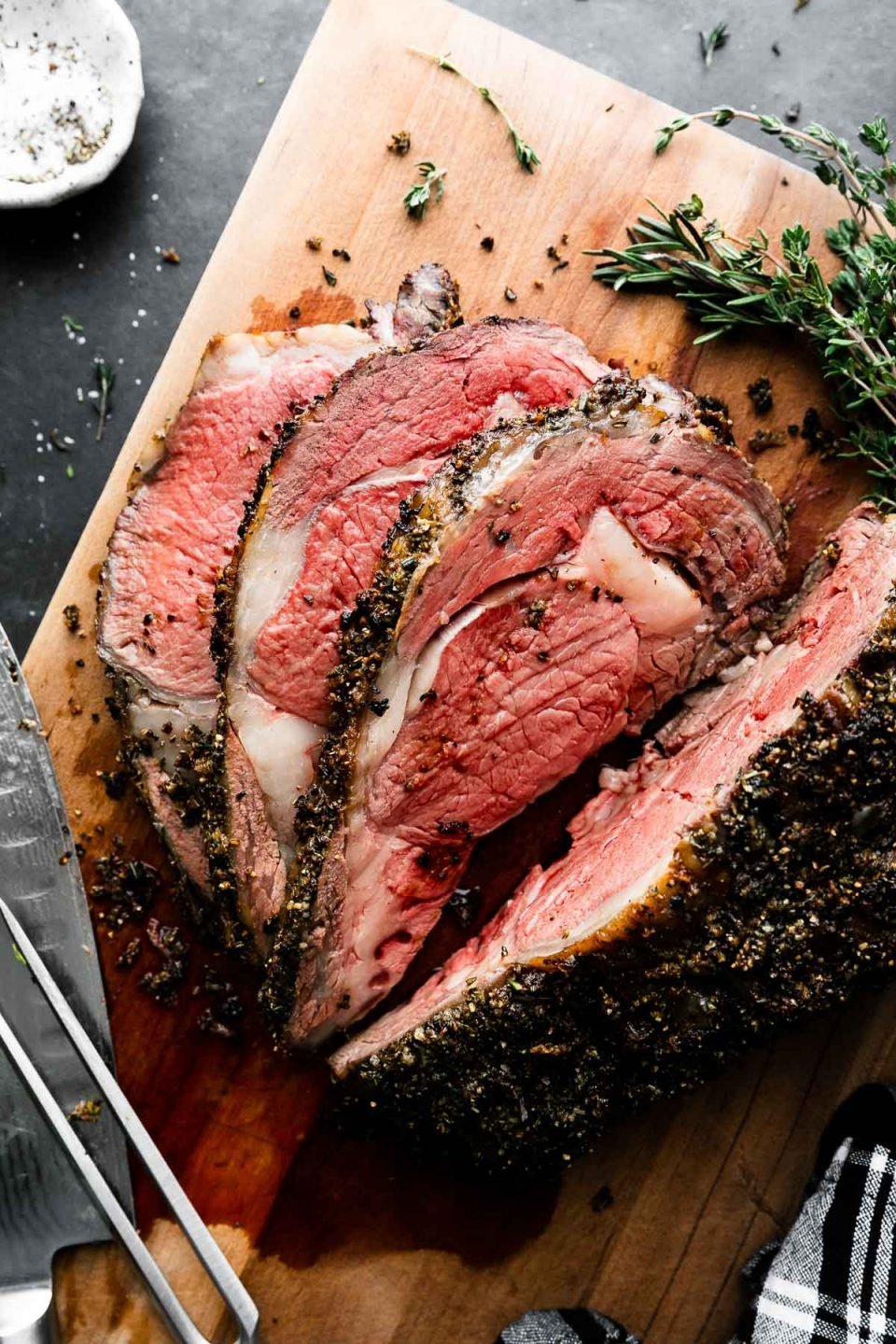
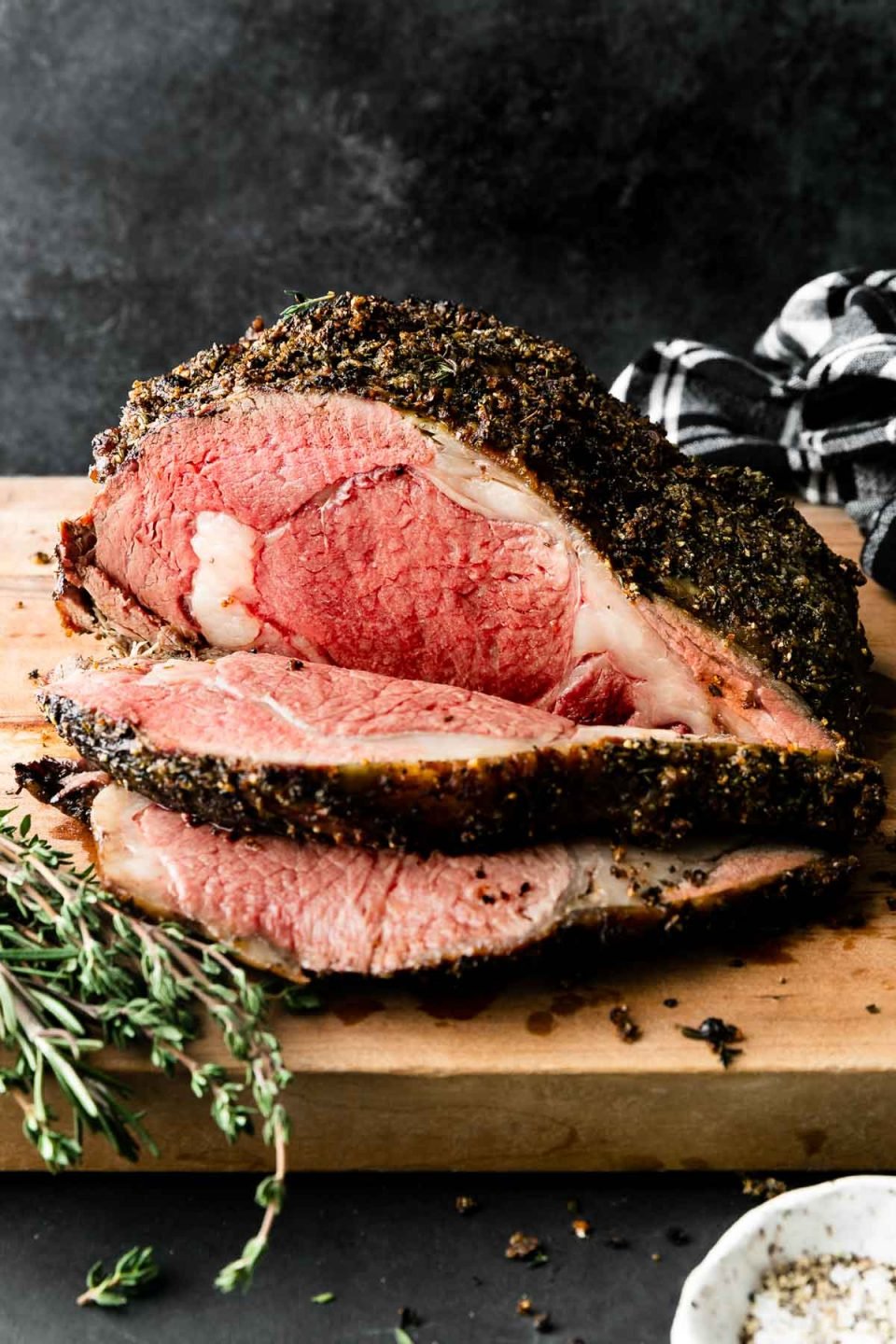








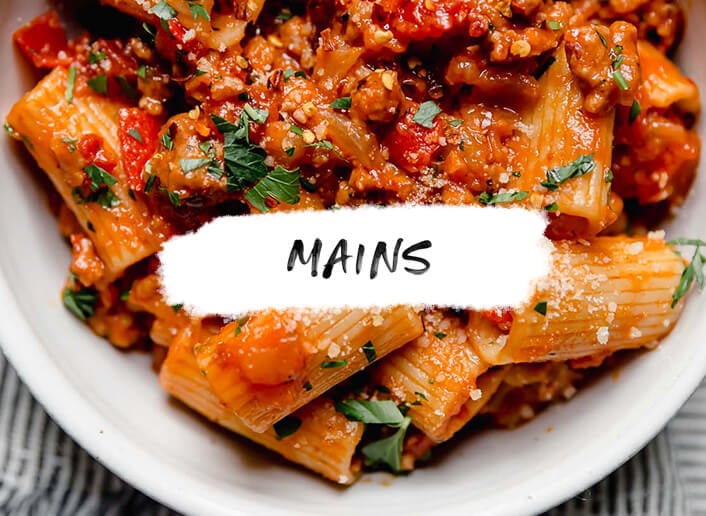
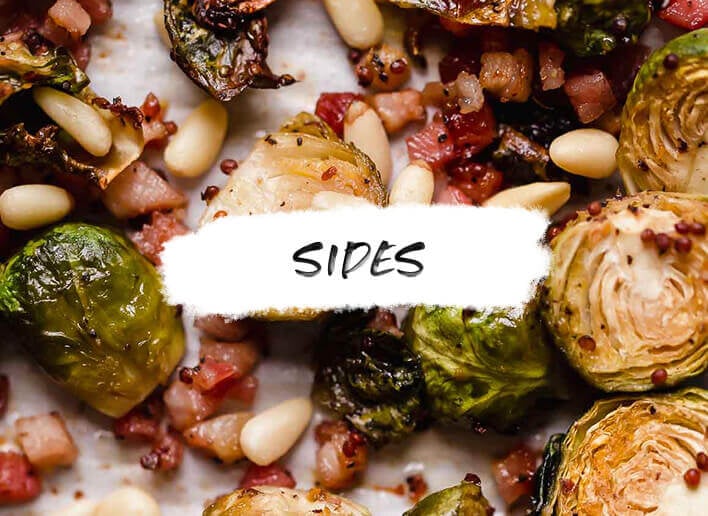


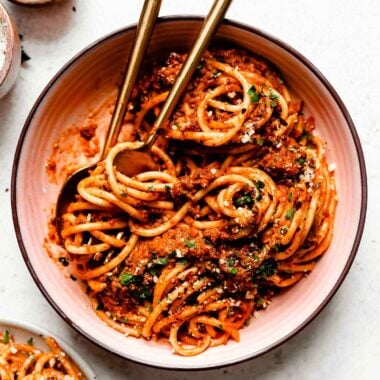
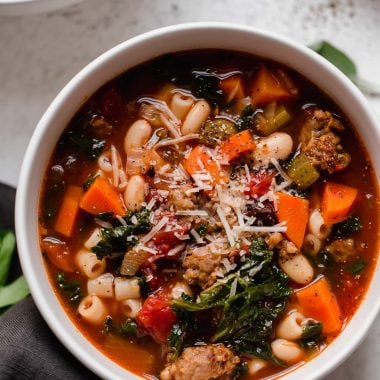

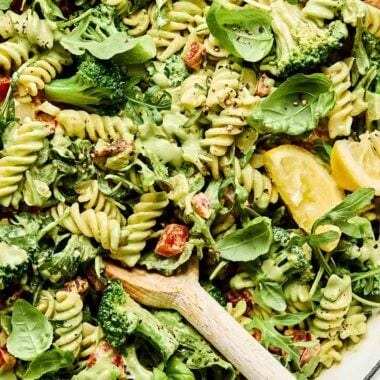

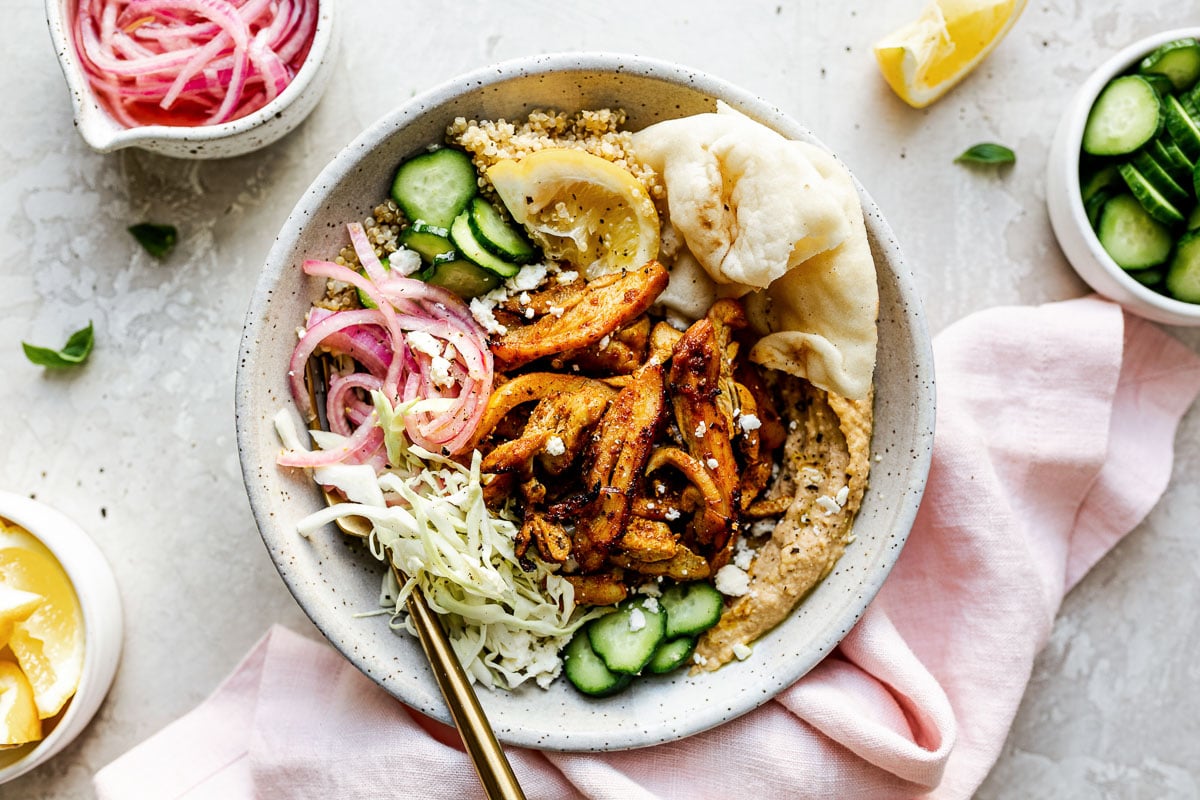
Thanks for this recipe. I have been doing rib roast, typically not prime rib, every year for decades on New Years Day. Never seem to get really good outcomes after using many methods. I believe that the inconsistent operation of ovens and air fryers is to blame. Anyway, this turned out very well.
I cooked two 5 pound roasts. The roasts had been dry aged for ten days and salted the night before. Both came to 70 F before the cook. I use a Meater to watch meat temperature and to prevent overcooking.
Added a wipe of olive oil and onion powder to the crust before the cook.
The cook went well using the Meater and both roasts were done in 1.5 hours. They rested up to 130 F while I made the au jus.
The au jus turned out very well after using a fat separator for the pan juices.
The roasts were a hit. Crusty, medium well on the outside and moist, medium rare inside. Some of the folks in the group love overcooked meat, so they were happy. The rest were able to pick from the variations of pink left over. Everybody got their version of cooked meat. Again, the au jus turned out very well.
Good news: the crowd was happy. Bad news: few leftovers for French Dips tomorrow.
We will try to repeat this in a couple weeks during the football playoffs since rib roasts are on sale. If this can be repeated, then my search for a cooking method and au jus will be over.
Thank you so much for the thorough review, Dennis! Thrilled that the prime rib was a hit with your group!
I followed this recipe to a t and my prime rib came out so overdone it was almost inedible
Hi Sam, we’re so sorry to hear that the Prime Rib didn’t turn out well for you. We’d love to help troubleshoot to figure out what might have gone wrong. What size (in lbs) was your roast? What type of pan did you use? And were you able to get a temperature read after roasting at the lower 200 degree temperature? Hoping we can help so your next roast turns out perfectly!
I made this for Christmas Eve dinner tonight for my son, self and parents. We discovered that their instant read thermometer was broken at the very end of the cooking time. My son urged us just to let it rest, then slice and eat that big ole hunk o meat. I served it up with a green salad, wild rice and mashed yams. Perfection! Doggo’s gnawing on a rib bone now, and she seems to agree. Thanks for a fool proof recipe. I will use it again, for sure.
Hi Marta! Oh no – a broken instant read thermometer just when you need it sounds like no fun! So glad everything worked out & it sounds like it turned out beautifully!! 🙂
Made this for a holiday gathering, the recipe was straightforward and my prime ribbed turned out perfectly. I used a slightly larger than recommended roast, but followed the advice of adding 5 extra minutes per pound when crisping the outside and that worked well.
What are your thoughts on reverse searing (low & slow to start, rest, then blast with high heat to build a crust)?
Hi Nick! When we tested this recipe we found that an initial roast at high heat to build a crust then a low & slow finish worked best & was the easiest & most approachable way to create a super flavorful medium-rare. Hope you give it a try soon!
I’ve made prime a couple times for Christmas and just decided we’d host and make prime… like this morning 😂 totally planning to follow your recipe complete with mashed potatoes and green beans! Can’t wait to try it!
Ah, sounds like the best Christmas dinner ever. I can’t wait to hear how it goes – definitely keep us posted! Merry Christmas!